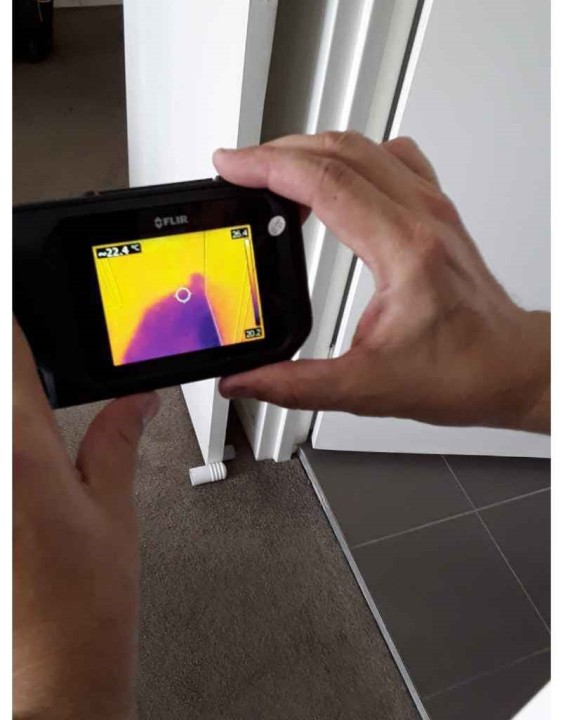
Moisture flow in Buildings
Reducing or controlling moisture flow is a critical concern in designing and constructing buildings and is a mandatory requirement in all 3 volumes of the National Construction Code.Volume 1 of the 2019 BCA stipulates:
Moisture flow in buildings can be identified into the below categories:
- Bulk Moisture transfer
- Capillary Action
- Condensation
- Vapour diffusion
1. Bulk moisture transfer
This refers to liquid flow and has the potential to cause the greatest damage to a building. For bulk moisture transfer to occur the following three factors must occur:
- Water source – rain or burst pipe
- Open void or penetration into the building
- Acting force to move the water – gravity, air pressure, wind.
There are two common ways of controlling moisture:
- Resist
- Divert
Resisting Moisture
This involves waterproofing and sealing a structure against moisture ingress and relies on the maintenance and durability of the installed systems.
Diverting Moisture
This relies on the use of gravity, falls and drainage systems to catch moisture and transport it rather than trying to resist it.
2. Capillary Action
Capillary action is where water travels against gravity in porous building materials. This is common in:
- Timber frames
- Brickwork
- Autoclaved aerated concrete (AAC) or more commonly known as Hebel
3. Condensation & Air movement
Condensation in buildings is common and is the transfer of moisture due to air movement. If the building envelope is not sealed, then not only is there a thermal loss which is a breach of the Basix or Section J requirements of the NCC/BCA, but small amounts of moisture can enter the building through the air.
Condensation is the process by which humid air converts into droplets of water on a cold surface. The rate of condensation therefore is dependant upon how humid the air is and how cold the contacting surface is, the area of exposure and the time of exposure.[1]
Building wrap, often called sarking, is used to control the transfer of wet or humid air from the outside of the building to the internal areas.
4. Vapour Diffusion
Vapour diffusion is where differential air pressure and the permeability (of openings) of building materials allow small amounts of air moisture to pass through a building material. Pressure differential between outdoor spaces and indoor areas create a vacuum type of affect, often drawing in moisture to the building.
5. Conclusion
In summary, moisture ingress and its paths need to be considered in building design, material selection and construction.
This more than simply attaining compliance with AS4654.2 for external waterproofing, but a wholistic approach to moisture in buildings requiring consideration from concept design and material selection prior to the engagement of a builder.
A builder then needs to consider all of the above and critically assess all waterproofing details.
TCA are often engaged at design review stage, we then complete project specific waterproofing specifications, undertake hold point inspections of all waterproofing prior to covering as well as defect inspections at completion.
A sample of TCA’s waterproofing design below:
Any queries please call (02)9599 8667 or email info@tcadviser.com.au
[1] Wangerow, L.C. Joint Sealing Device. U.S. Patent US3521528A, 21 July 1970
[1] Institute of Medicine (2004) Damp Indoor Spaces and Health. http://www.iom.edu/Reports/2004/Damp-Indoor-Spaces-and-Health.aspx. Accessed November 6, 2013.
read more articles

